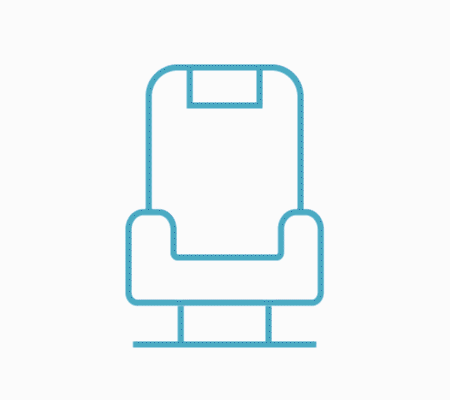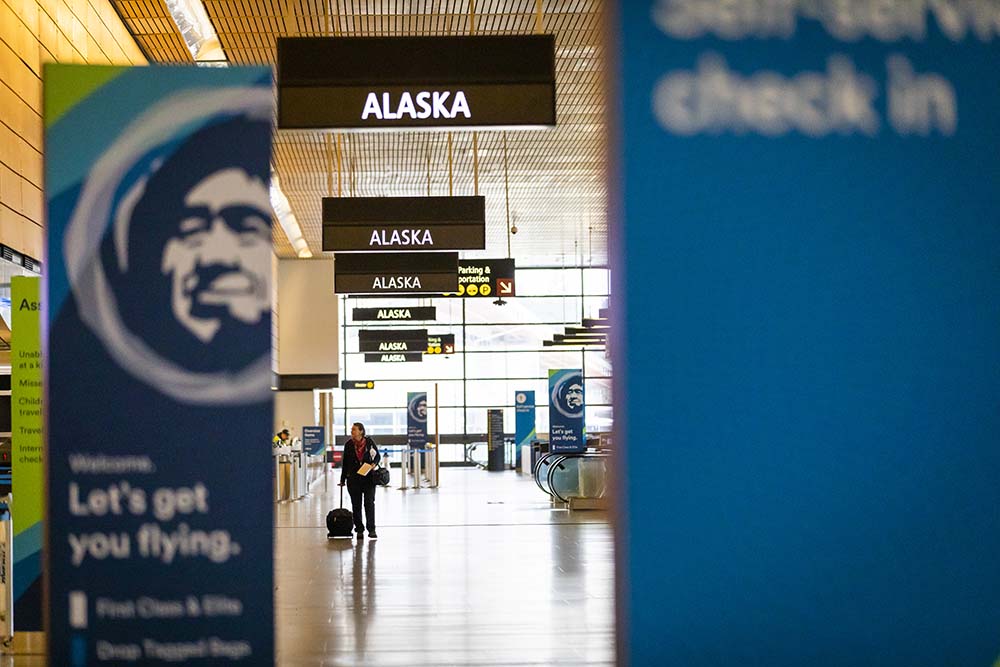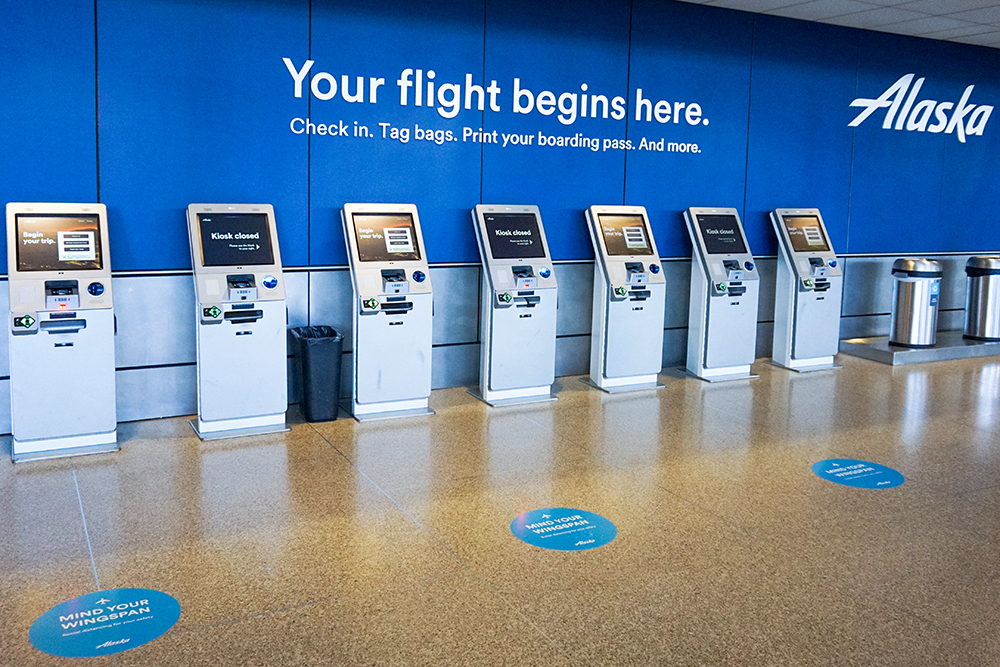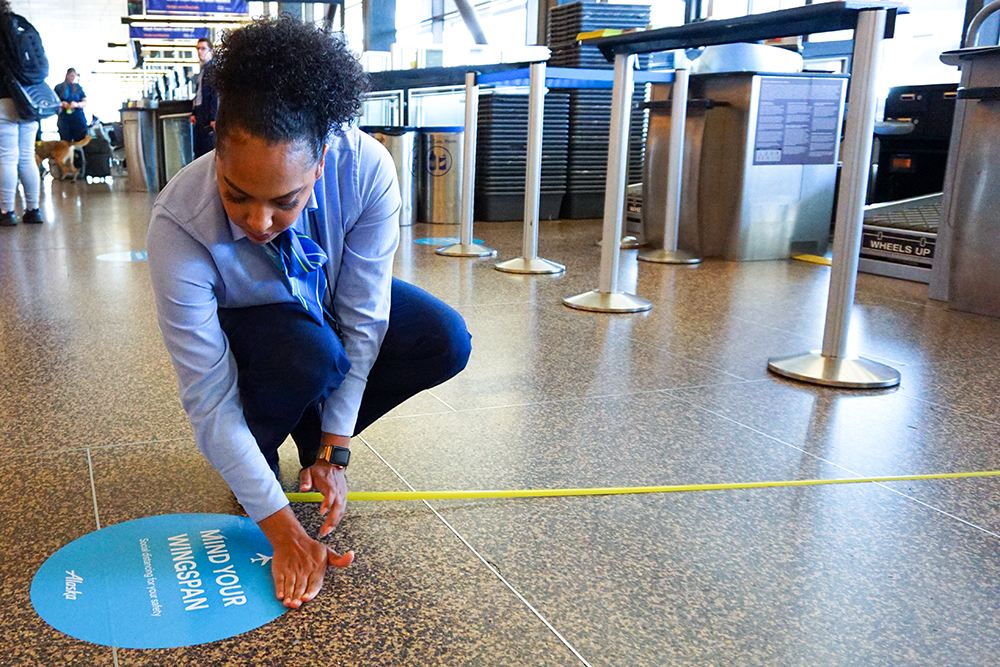“Welcome aboard, this is your dad from the flight deck.” Pilot flies son on Make-A-Wish trip
Share

Photos by Ingrid Barrentine | Note: Photos & flight were taken before COVID-19.
One of the most memorable events for Make-A-Wish kids who fly on Alaska Airlines is the chance to visit the flight deck before their flight. For young Haak Mohr (pronounced: Hawk), of Minneapolis, Minn., it was even more special as his dad and uncle were the pilots.
Ryan Mohr (Haak’s dad) was the first officer and Dan Driggs (Haak’s uncle) was the captain for Haak’s special Make-A-Wish flight from Seattle to Hawaii late winter. The trip was a surprise and a long time coming for the Mohr family, whose lives were jolted when Haak was diagnosed with Wilms tumor cancer just over a year ago.

Haak was a running, jumping, healthy 5-year-old who loved his golden retriever puppy and watching the Minnesota Vikings, according to Mohr, who is based in Seattle. Around Christmas of last year, Haak’s parents noticed a paleness in his skin coloring, so they took him to the doctor. “They sent us home with some Miralax and said he’d be fine,” Mohr said.
But Haak wasn’t fine. When they took him back again 10 days later, he was admitted immediately to Children’s Hospital. Within 24 hours, he was in surgery for a volleyball-sized tumor attached to his kidney. After a six-hour surgery, the doctors informed the Mohr family that the tumor had ruptured and that Haak had stage three cancer.
After 18 days in the hospital, Haak went through eight radiation treatments along with nine months of chemotherapy and daily physical therapy.
“He was just a trooper and stayed positive the whole time,” Mohr said. But the chemo and radiation took a toll on his tiny body. “There were side effects, his immune system shut down and we all stayed home. Keeping him fed and healthy were to be our biggest challenges.”

Alaska’s Employee Assistance Fund jumps in to help
Mohr, who has been with Alaska for 7.5 years, took some time off.
“I didn’t leave the ground myself for about 10 months,” he said. It was through assistance from Alaska’s Employee Assistance Fund (EAF) that he was able to do that.
“I applied and they were wonderful, helping with bills so we could focus on Haak,” Mohr said. “It gave me precious moments with my son during a time where he was considered critical and fighting a disease that could be terminal.”

An overdue family vacation
Haak went into remission and became stronger. The family was offered a dream trip to Hawaii to stay at the Aulani Disney Resort, thanks to the local Make-A-Wish foundation. As the family started to plan, Mohr wanted to make sure their flight was on Alaska Airlines. And maybe—just maybe—he and his brother-in-law Driggs, an Anchorage-based captain, could fly the plane?
Mohr wrote to CEO Brad Tilden with the plan, who put him in touch with Chief Pilot Scott Day and Base Chief Pilots Craig Huffman and Dave Mets who made it happen.
It was a dream come true after a year of hardship. As Haak and his brothers, Bodey (11) and Mavryk (10) and mom, Tory, piled into the flight deck with Mohr and Driggs for photos, onlookers were close to tears. The energy continued upon landing in Honolulu, as Contract Service Lead Kelsey Rollo and the local Hawaii chapter of Make-A-Wish greeted the family with welcome signs and flower leis.

Haak, wearing his mini pilot’s hat, had a smile pasted to his face as he high-fived well-wishers cheering in the terminal.
“He couldn’t wait to see tropical fish,” said Mohr. “We don’t have those in Minneapolis.” The fight’s not over. Haak’s type of cancer has a high relapse rate. But for now, he’s healthy. “He’s a survivor, at six-year’s old.”
















 If you’re still having issues uploading a background, please visit the
If you’re still having issues uploading a background, please visit the 




 Cleanliness has always been important to us, but the next level involves techniques that reduce the already low risk of onboard transmission.
Cleanliness has always been important to us, but the next level involves techniques that reduce the already low risk of onboard transmission.












 “This month is a very special time where we get the chance to share our culture with the rest of the world. Tonga is known for being the friendliest island and so I’d like to keep that spirit alive whether I’m at work, home or out running errands. Be a light wherever you go.” — Ila Langi, a customer service agent in San Jose California
“This month is a very special time where we get the chance to share our culture with the rest of the world. Tonga is known for being the friendliest island and so I’d like to keep that spirit alive whether I’m at work, home or out running errands. Be a light wherever you go.” — Ila Langi, a customer service agent in San Jose California “This month has become a little more meaningful to me than it has in the past because I have finally taken initiative the past couple months to expand more on what I know of my culture. Especially being married to my husband, who knows the language and culture almost so fluently, he has helped me so much. He’s so encouraging and he makes it so enjoyable to learn and love our culture!” — Angelica Mapa, a customer service agent in San Jose California “Every day, I always try to make it a habit to pass on my knowledge to the younger generation in my family by trying to speak as much Tongan in the home and teach them traditions that we still hold on to today. At work, I always try to answer questions about my culture and heritage to anyone that asks. I always admire my coworkers who openly share what traditional foods they love to make or traditional events they keep up with their family because it also encourages me to share mine as well. It’s always a safe place to share about our heritage at work because no one judges,” she said.
“This month has become a little more meaningful to me than it has in the past because I have finally taken initiative the past couple months to expand more on what I know of my culture. Especially being married to my husband, who knows the language and culture almost so fluently, he has helped me so much. He’s so encouraging and he makes it so enjoyable to learn and love our culture!” — Angelica Mapa, a customer service agent in San Jose California “Every day, I always try to make it a habit to pass on my knowledge to the younger generation in my family by trying to speak as much Tongan in the home and teach them traditions that we still hold on to today. At work, I always try to answer questions about my culture and heritage to anyone that asks. I always admire my coworkers who openly share what traditional foods they love to make or traditional events they keep up with their family because it also encourages me to share mine as well. It’s always a safe place to share about our heritage at work because no one judges,” she said. “This month means so much to me because not only does API month highlight my culture, it allows me to honor the generations before me that have paved the way for me, by their sacrifices and hard work. I am so blessed to have grown up in a multilingual household, and speaking multiple languages helps me stay connected to my heritage.” — Daniel Remigio, Seattle-based flight attendant
“This month means so much to me because not only does API month highlight my culture, it allows me to honor the generations before me that have paved the way for me, by their sacrifices and hard work. I am so blessed to have grown up in a multilingual household, and speaking multiple languages helps me stay connected to my heritage.” — Daniel Remigio, Seattle-based flight attendant “When most people think of Polynesians, they usually think of song and dance, and rightfully so, as it is the root of our culture. Dating back thousands of years, singing and dancing has been an ancient tradition used to communicate and connect, from ceremonial rituals to preparing for war to reciting history through storytelling and more. And although hula might be one of the first types of dance that comes to mind, there are actually many forms of ancient melodic traditions from around the South Pacific, like Samoa, Tonga, New Zealand, Fiji and Tahiti. But no matter which island or country, we all share that same heartbeat of Polynesia through dance.” — Shanyn Wright, multimedia communications specialist
“When most people think of Polynesians, they usually think of song and dance, and rightfully so, as it is the root of our culture. Dating back thousands of years, singing and dancing has been an ancient tradition used to communicate and connect, from ceremonial rituals to preparing for war to reciting history through storytelling and more. And although hula might be one of the first types of dance that comes to mind, there are actually many forms of ancient melodic traditions from around the South Pacific, like Samoa, Tonga, New Zealand, Fiji and Tahiti. But no matter which island or country, we all share that same heartbeat of Polynesia through dance.” — Shanyn Wright, multimedia communications specialist










 Not only can living herbs bring out so many flavors, but they can also be used as disinfectants and natural remedies for health and wellness. Pair sage with water with a little alcohol to make your very own natural disinfectant that smells wonderful, says Buehler.
Not only can living herbs bring out so many flavors, but they can also be used as disinfectants and natural remedies for health and wellness. Pair sage with water with a little alcohol to make your very own natural disinfectant that smells wonderful, says Buehler.


















